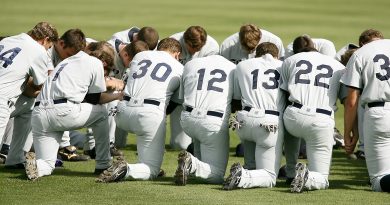1900 to 1919: The Dead Ball Era in Baseball
The baseball era that has come to be known as the “Dead Ball Era” began in the early decades of the 20th century. According to reports, the Dead Ball Era covered the period from 1900 to 1919 known as the Progressive Reform Age before the Roaring Twenties. At this time, pitching and defense were heavily utilized by professional and semi-professional baseball teams, and scoring was scarce.
The tempo of the games was dominated by pitchers, and some renowned pitchers cemented their long-lasting legacies during this time. Cy Young, Walter Johnson, and Grover Cleveland Alexander were a few of the most renowned. These guys and a few more contributed to the dearth of offensive output during this time, but there were other factors at play as well.
The term “Dead Ball” also refers to the baseball’s actual state, particularly at the end of games when it had undergone customary manipulation, defacing, and alteration. At $3 each, baseballs were thought to be pricey and were typically only used once every game. By contemporary standards, the ball’s toughness and aerodynamics were subpar, which made hitting it difficult.
Generally speaking, even though the ball was considered to be “dead” by most accounts, neither the offense nor the defense actually benefited greatly from it. Although the ball could not be hit very far, its poor condition reduced its speed and increased the pitch’s movement, making it slightly simpler for hitters to make contact. The enormous speed off the bat seen in today’s game was not produced by hit balls. The field’s defenders benefited from this. Only lost balls that were struck into the stands were restored. There weren’t many long-ball hitters, and “short game” strategies were frequently used, however, some sources claim that the Dead Ball Era saw a paucity of such strategies overall, which may have contributed to the lack of offensive output.
The “foul-strike” rule, which punished hitters with their first two strikes on foul balls, was implemented in the National League in 1901 and the American League in 1903. The new regulation favored pitchers while significantly decreasing offensive production. Additionally, it was still permissible to “spit balls” and, despite being against the law, it was fairly usual to deface the ball in some way. As a result, as one might anticipate under these circumstances, hitting a soft, damp, and frequently tarnished ball led to more singles and fewer doubles, triples, and home runs.
The sacrifice bunt and distributing pitching duties across a bigger bullpen also gained popularity. Both of these tactics were damaging to a hitter’s overall effectiveness. Strangely, this era also produced several legendary record-breaking hitters, most notably Ty Cobb. Cobb, who was from Georgia and went by the moniker “Georgia Peach,” was best known for his razor-sharp hitting accuracy and his tenacious, never-give-up attitude. He established the records for career batting average (.366) and runs scored (2,245), both of which are still in use today. He also had the most hits at the end of his career. Pete Rose eventually beat this record in the middle of the 1980s. Ty Cobb received 222 out of 226 votes to become baseball’s first-ever inductee into the Hall of Fame in 1936.
Managers depended on defensive strategy significantly more than offensive strategy during the “Dead Ball Era”. “You could shake a tree and find a bat,” it was once said, “but finding a glove was a whole different matter.” Managers were not really looking for offensive abilities. The defense was the main priority. Given that there was no change in the manufacture of the ball between the high-scoring 1890s and the low-scoring 1900s, several critics contend that “dead” baseballs were probably not the cause of low scoring. The 1894 season had the biggest offensive run totals in the National League’s history. In an effort to make the ball more lively and boost scoring, the ball’s structure was altered in 1911. The first time the balls were corked. The Dead Ball Era persisted, however, for a further eight years, until 1919.
The “Merkle Incident” was an occurrence in the National League in 1908 that has come to be well-known. In a tie game with two outs in the bottom of the ninth and runners on first and third, it happened during a regular-season game between the Giants and the Cubs. Al Bridwell’s single hit appeared to win the game for the Giants when the runner scored from third. Because of the throng of spectators at the Polo Grounds and the fact that it wasn’t totally traditional at the time to run out of game-winning hits, Fred Merkle, who was on first base, instead of moving to second base rushed to the clubhouse. Johnny Evers, the second baseman for the Cubs, later asserted that he had quickly retrieved the ball and tagged second base. Merkle was ejected from the game at second, and the winning run was declared invalid by a strict application of the regulations. None of the umpires saw Evers make the play due to the chaos on the field. The League only ordered the game to be replayed at the end of the season if it was required because an official protest had been filed. When the Cubs and Giants finished the regular season deadlocked for first place, it became apparent that it was required. The Cubs won the rescheduled game, the League pennant, and the World Series after that. Since then, the Chicago Cubs have not captured a World Series until 2016.
No essay on the Dead Ball Era would be complete without including The White Sox of 1919, sometimes known as the “Black Sox,” even though they weren’t brought to the public’s and media’s attention until 1920. Many White Sox players believed their salaries were too low. Due to a recent trend, owners in both leagues began paying the greatest players significantly more money than they had in the past. At the same time, White Sox owner Charlie Comiskey believed that reducing expenses was the best way to bounce back from his team’s dismal 1918 performance. Eight of the starting White Sox players conspired to toss the World Series as a result. Many series viewers had this suspicion, and a protracted dispute eventually prompted a Grand Jury investigation. “Shoeless” Joe Jackson and Eddie Cicotte were the first to come forward and acknowledge their involvement in the plot. Baseball’s “Black Sox” were all eight suspended players. All eight players were declared permanently ineligible even though there was no law prohibiting planning to rig baseball games and they were all ultimately found not guilty.




